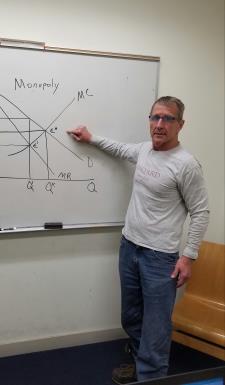
Lenny D. answered • 04/27/19
Financial Professional with many years of Wall Street Experience
Earnings(2000)/Earnings(1990) = e^gt wher t = 10 years and t= 10 years and g = growth rate.
Take natural log s on both side and get Ln(E(2000))-Ln(E(1990)) = g*10 or g = !/10 (ln(119.6)-ln(44)= 10% (almost really9.9996%) so we want 44 million growing at 10 percent compounded continually to equal 217.9 now we take Ln( 217.9/44) = t*10% or t = ln(217.9/44) / 10% or t = 15.97 tears




